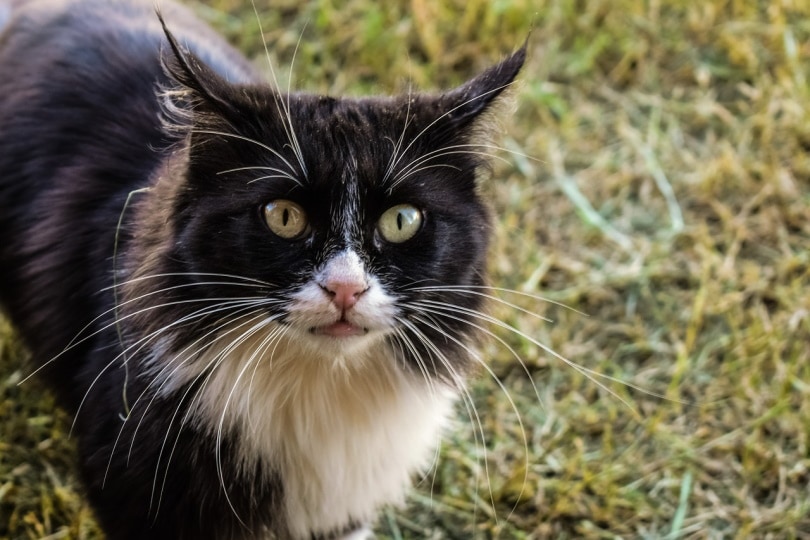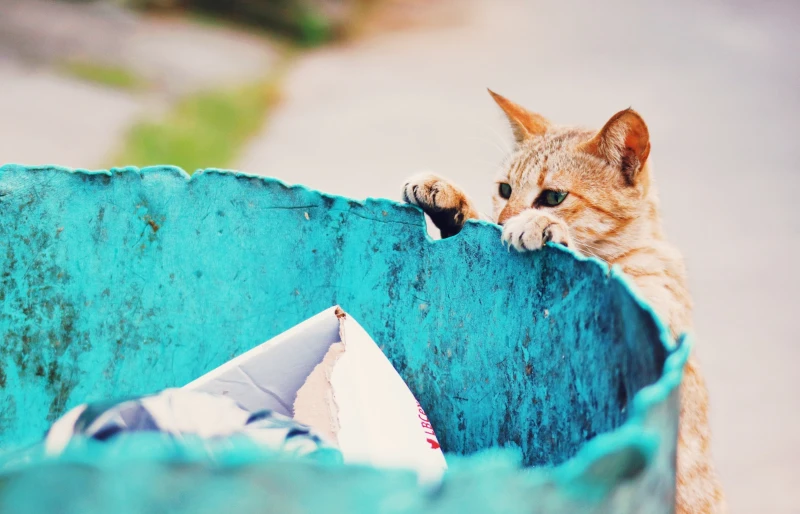
Outdoor cats are an endless source of fascination and adoration by cat people. When people see cats outside, they like to automatically assume that they are lost or in need of help. But not all outdoor cats need help. There are big differences between stray cats, lost cats, and feral cats. Feral cats are the most dangerous type of outdoor cat and the ones that should not be approached. But how can you tell if a cat is feral or stray? There are seven signs you can watch for before interacting with a potentially dangerous outdoor cat.
What Does Feral Mean?
Feral cats are unsocialized outdoor cats that have had little to no consistent contact with people. Feral cats want nothing to do with people and are essentially wild. Feral cats are able to take care of themselves and live perfectly happily without humans in their lives. Feral cats are fearful of people and will likely never be able to be domesticated.
Feral vs. Stray
While it might not seem like it at first, there are some major differences between feral and stray cats. Feral cats have never had socialization with humans or have been alone for so long that human connections have faded away to nothing. Stray cats are outdoor cats that do not have a home with humans, but they will often still associate with people. Strays are often cats that once lived inside or were cared for by people. They are more likely to take food from people and approach people. Stray cats have the potential to be pet cats once again, while feral cats will likely never be able to be owned by people.
That being said, here are some important signs to look for while attempting to determine if a cat is feral or stray. Feral cats are more dangerous than stray cats and often do not need help from humans.

The 7 Signs to Look For
1. The Cat Is Fearful of Humans
One of the first signs to look for in a feral cat is the fear of humans. Feral cats are not used to associating with humans, and getting close to them will cause them to run away in fear. If cornered by humans, feral cats will act aggressively and often attack in defense. Fear is a big indicator of a cat being feral, but it is only one piece of the puzzle. Lost cats and stray cats can also be fearful of strange people, but feral cats will always be scared of humans.
2. The Cat Will Not Approach
Some people are delighted when stray cats come up to them in public. This is a behavior that feral cats will not exhibit. Feral cats might freeze or keep their distance instead of running away at the sight of a person, but they will never approach a person. Even if you get low, make friendly noises, or offer food, feral cats will often remain well away from you.
3. Aggressive Body Language
Most animals have a fight-or-flight reflex that will flare up when they are scared. Many cats will opt to run away (flight) rather than fight, but not all of them will. You have to be careful around potentially feral cats and be wary of aggressive body language. Cats that puff up, arch their back, and start showing their teeth might be getting ready to fight rather than flee. A cat that is willing to fight when people get close to it is a good indicator that it is feral.

4. Hissing
Hissing is the universal sign that a cat is agitated. Feral cats will often hiss when people get too close. If you find a cat outside and it starts hissing at you, you should not approach. It is very likely that the cat is feral, and might be harboring zoonotic diseases or can injure you if they decide to attack.
5. Appearance
Feral cats live outside and are not kept by humans. That means that they will often look much different from domesticated or stray cats. Feral cats will often have rougher coats than pet cats. They might also be thinner, leaner, or sleeker. They might even have injuries or signs of past injuries. Interestingly enough, feral cats may have better looking coats than stray cats. Stray or lost cats will be stressed and will not keep their coats as clean as they normally do. Feral cats will have clean and well-kept coats, but they will appear rougher than stray cats.

6. You Spot Them at Night
Feral cats are more likely to be spotted at night than during the day. Stray cats will come out during the day in an attempt to interact with people. Feral cats do not want to interact with people. They will stick more closely to their natural behaviors, which are nocturnal. If you frequently see the same cat at night but never during the day, they are likely feral.
7. They Are Not Alone
In the wild, cats like to live together in groups known as a clowder or glaring. Cats will hunt alone but spend their social time together with each other. If you spot a group of cats that tend to stay together and avoid humans, they are likely feral cats in a clowder/glaring. Stray cats or lost cats are used to getting their socialization and food from humans, so they do not often join a cat clowder/glaring.
Conclusion
Feral cats are wild and potentially dangerous outdoor cats. They have never had any meaningful interactions with people, and they happily live in large cat colonies. Feral cats should not be approached and rarely need help or food from people. Stray cats are more amenable to people and have more potential for interaction.
Featured Image Credit: dimitrisvetsikas1969, Pixabay








